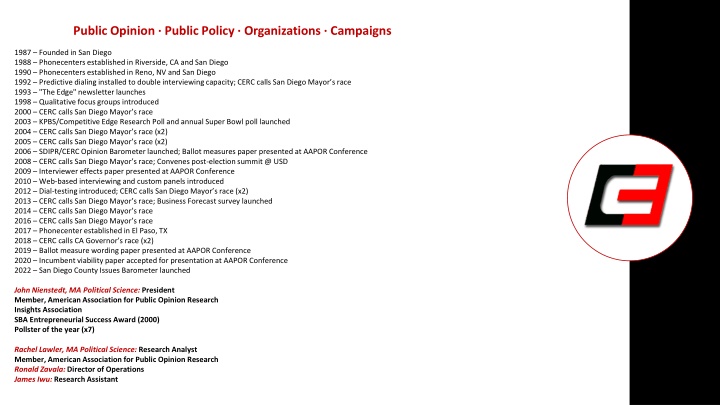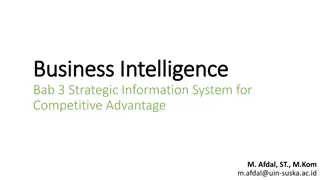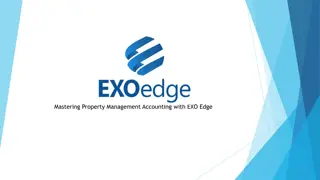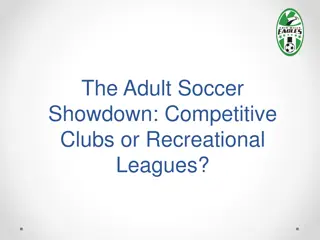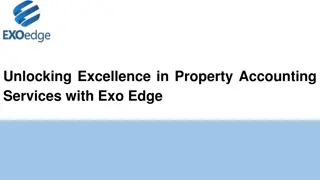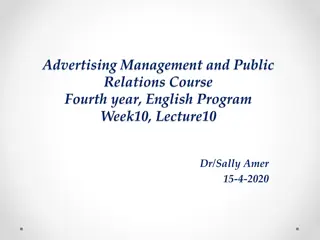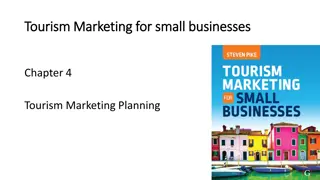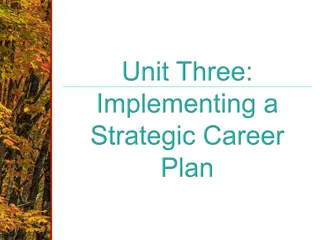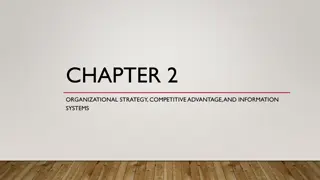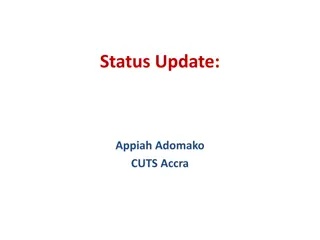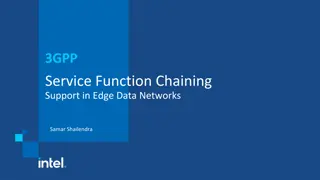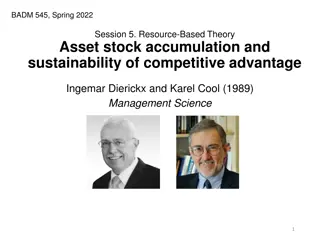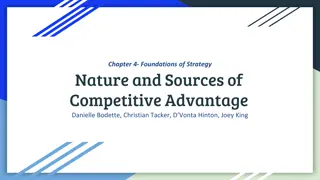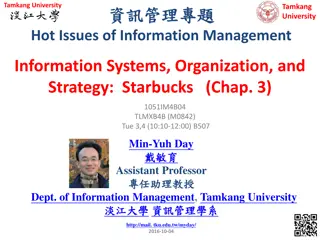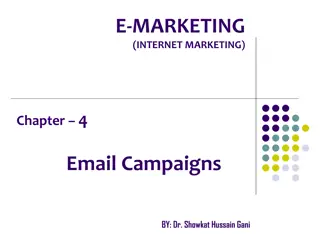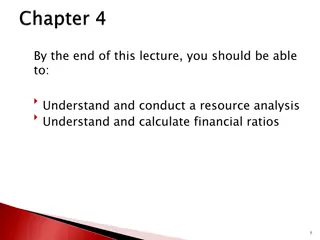Evolution of Competitive Edge Research Campaigns
Established in San Diego, Competitive Edge Research has evolved over the years through various milestones such as the introduction of predictive dialing, launching newsletters, conducting qualitative focus groups, and more. The organization's commitment to public opinion research is evident through their continuous innovation and contributions to political and public policy campaigns.
Download Presentation

Please find below an Image/Link to download the presentation.
The content on the website is provided AS IS for your information and personal use only. It may not be sold, licensed, or shared on other websites without obtaining consent from the author.If you encounter any issues during the download, it is possible that the publisher has removed the file from their server.
You are allowed to download the files provided on this website for personal or commercial use, subject to the condition that they are used lawfully. All files are the property of their respective owners.
The content on the website is provided AS IS for your information and personal use only. It may not be sold, licensed, or shared on other websites without obtaining consent from the author.
E N D
Presentation Transcript
Public Opinion Public Policy Organizations Campaigns 1987 Founded in San Diego 1988 Phonecenters established in Riverside, CA and San Diego 1990 Phonecenters established in Reno, NV and San Diego 1992 Predictive dialing installed to double interviewing capacity; CERC calls San Diego Mayor s race 1993 "The Edge" newsletter launches 1998 Qualitative focus groups introduced 2000 CERC calls San Diego Mayor s race 2003 KPBS/Competitive Edge Research Poll and annual Super Bowl poll launched 2004 CERC calls San Diego Mayor s race (x2) 2005 CERC calls San Diego Mayor s race (x2) 2006 SDIPR/CERC Opinion Barometer launched; Ballot measures paper presented at AAPOR Conference 2008 CERC calls San Diego Mayor s race; Convenes post-election summit @ USD 2009 Interviewer effects paper presented at AAPOR Conference 2010 Web-based interviewing and custom panels introduced 2012 Dial-testing introduced; CERC calls San Diego Mayor s race (x2) 2013 CERC calls San Diego Mayor s race; Business Forecast survey launched 2014 CERC calls San Diego Mayor s race 2016 CERC calls San Diego Mayor s race 2017 Phonecenter established in El Paso, TX 2018 CERC calls CA Governor s race (x2) 2019 Ballot measure wording paper presented at AAPOR Conference 2020 Incumbent viability paper accepted for presentation at AAPOR Conference 2022 San Diego County Issues Barometer launched John Nienstedt, MA Political Science: President Member, American Association for Public Opinion Research Insights Association SBA Entrepreneurial Success Award (2000) Pollster of the year (x7) Rachel Lawler, MA Political Science: Research Analyst Member, American Association for Public Opinion Research Ronald Zavala: Director of Operations James Iwu: Research Assistant
San Diego San Diego County Issues County Issues Barometer Barometer Transit Funding Proposals Opposed, as SANDAG, New Gas Vehicle Ban Roundly Criticized March 2023 March 2023 Mood Remains Unsettled as Homelessness is Top Issue Again
Summary Research Objectives: Sample Size: Margin of Sampling Error: Confidence Level: 1) Document trends in civic mood and important issues 2) Explore SANDAG, public transportation, and plans to expand it n=508 4.3% 95% Sample Methodology: Simple random sampling from listed sample Jurisdiction: San Diego County Eligibility: Adult residents Interview Methods: Telephone (including cell phones), e-mail push-to-web, text push-to-web Field Dates: March 1-7, 2023 Field Facility: Competitive Edge Research, El Paso TX Project Director: John Nienstedt, Sr. Research Analyst: Rachel Lawler Research Assistant: James Iwu
Trends Page | 4
The Mood Remains Unsettled 32% think things are going in the right direction Outweighed by residents who say we re on the wrong track And negative sentiment is more robust Mood is now mainly a product of race AAPI residents are most upbeat Multi-racial residents are the least pleased Other communities are more divided. Page | 5
Top Concerns are Unchanged Homelessness continues to outpace other issues by double digits More problematic among voters than non-registrants Makes this politically incendiary Housing affordability remains a very substantial concern 9% focus on cost of living, but those with no college are far more impacted Jobs/economy doubled vs December Utility costs have spiked as an issue Men, north county residents, and whites place more emphasis on them Housing availability is at 4% Crime concerns, worries over inflation and problems with gas prices have lessened. Page | 6
A Closer Look at Our Ethnic Communities Mood in the Latino community is roughly comparable to the county as a whole African Americans are slightly more upbeat The AAPI community is much more satisfied with the county s direction More AAPI residents emphasize taxes But rarely cite housing affordability Housing affordability is more top-of-mind for Latinos Even tops homelessness Economy is also a big issue Utility costs and taxes are less important African Americans are less focused on the economy. Page | 7
Public Transportation Usage Page | 8
Just 6% Take Public Transit > 2 Times/Week Roughly 160,000 residents would have a tough time living w/o it 12% are weekly+ users We ll call these 320,000 regular riders 21% use it at least monthly That s about 570,000 monthly+ riders > 780,000 residents (29%) have never used county public transit And another 570,000 almost never use it Half of all county adults don t use the current system at all However, there are astounding differences by age Those < 27 use it more regularly Suggests SDSU and UCSD trolleys draw riders Especially staggering ridership among women Ridership drops among adults 27+ Although weekly usage is higher in lower income areas. v Page | 9
A Closer Look at Our Ethnic Communities Ethnic communities generally rely more on San Diego s public transit Black residents are 5x more likely to use public transit multiple days a week than others But they re also more likely to have never used it Latinos are more likely to have used San Diego s public transport system at least once The Asian community contains more weekly riders. Page | 10
Outlawing the Sale of New Gas-Powered Vehicles Page | 11
San Diegans Reject the 2035 Ban 6-in-10 disagree with California Air Resources Board s decision 47% strongly so One-third agree with the ban, but support is lukewarm It s a partisan issue Republicans are vehemently opposed Almost all those 50+ strongly disagree Democrat minorities, NPP, minor party, and non-registrants in mid- and lower- income areas side with the GOP(!) Only 2 groups agree with the ban: White Democrats Other non-Republicans in upper income neighborhoods. Page | 12
A Closer Look at Our Ethnic Communities There s distaste for the ban across AAPI, Black, and Latino communities. Page | 13
SANDAG Job Performance Page | 14
SANDAG and Its Plan SANDAG defines itself as both a metropolitan planning organization and a council of governments It brings together local decision-makers to develop solutions to regional issues including improving equity, transportation, air quality, clean energy, economic development, goods movement, public health, public safety, housing, and more. Page | 15
SANDAG Struggles Most know of SANDAG but only half can rate it Latinos are less familiar Just 11% say the organization is doing an excellent or good job 36% give it an only fair or poor rating Performance ratio = dismal 1:3.3 Views are tightly tied to the gas vehicle ban Those strongly against it are much more critical The rest aren t fans per se They often can t rate it But those 64+ offer harsher reviews The implication is SANDAG is aligned with the ban This is the kind of thing SANDAG does Doesn t sit well with lots of folks. Page | 16
A Closer Look at Our Ethnic Communities White 17% Latino 55% Black 23% Asian 9% All 28% Most Latinos are unaware of SANDAG None of the AAPI residents (in our sample) think SANDAG does an excellent job Instead, they often know about the Association but cannot rate it African American residents are also critical But 21% like its performance. Never heard Poor Only Fair Heard but unsure Good 31% 12% 25% 13% 9% 11% 16% 9% 14% 31% 11% 18% 4% 20% 67% 1% 23% 13% 26% 10% SANDAG job performance Excellent 1% 1% 3% 0% 1% Page | 17
SANDAGS Plan for a New Public Transportation Network Page | 18
SANDAGs Plan Its promoting a new $165 billion public transport network This plan is largely based on bus lanes and trolley access across the county Would be free for residents. Page | 19
A 4 Cent Per Mile Tax is Wildly Unpopular 77% are opposed Most strongly so Selling residents on more fees will be very challenging 18 to 24-year-olds are on board But opposition rises with age County critics overwhelmingly oppose it, but happier folks are less upset by the VMT It s not the right time But it s difficult to see any right time on the horizon Unincorporated area residents are decidedly against it Weekly transit riders are twice as supportive as moderate- and non-users But even they d pay the VMT sometimes The proposal even struggles with Democratic women and college- educated Only the 1% who say SANDAG does an excellent job support the tax. Page | 20
A Closer Look at Our Ethnic Communities All ethnic communities oppose the VMT Though Asians and Blacks are less critical. Page | 21
A Half-Cent Sales Tax Increase Encounters Less Resistance but it s also unacceptable Nearly half strongly oppose it Most who are happy with the county s direction are supportive But the reverse is more true Advanced degree holders are in favor Support drops as education levels decline National City residents are a pocket of strong support Republicans gag at the idea Non-partisans and minor party voters join them Democrats like it a lot more But only 25% definitely want it Women 55+ are 2x more supportive than others SANDAG fans generally like the proposal but critics and those unaware of it reject the tax. Page | 22
A Closer Look at Our Ethnic Communities Latinos more stridently oppose sales tax increase than residents overall Views of AAPI and Black folks reflect those of the wider populace. Page | 23
Thank You! Page | 24
Public Opinion Public Policy Organizations Campaigns 1987 Founded in San Diego 1988 Phonecenters established in Riverside, CA and San Diego 1990 Phonecenters established in Reno, NV and San Diego 1992 Predictive dialing installed to double interviewing capacity; CERC calls San Diego Mayor s race 1993 "The Edge" newsletter launches 1998 Qualitative focus groups introduced 2000 CERC calls San Diego Mayor s race 2003 KPBS/Competitive Edge Research Poll and annual Super Bowl poll launched 2004 CERC calls San Diego Mayor s race (x2) 2005 CERC calls San Diego Mayor s race (x2) 2006 SDIPR/CERC Opinion Barometer launched; Ballot measures paper presented at AAPOR Conference 2008 CERC calls San Diego Mayor s race; Convenes post-election summit @ USD 2009 Interviewer effects paper presented at AAPOR Conference 2010 Web-based interviewing and custom panels introduced 2012 Dial-testing introduced; CERC calls San Diego Mayor s race (x2) 2013 CERC calls San Diego Mayor s race; Business Forecast survey launched 2014 CERC calls San Diego Mayor s race 2016 CERC calls San Diego Mayor s race 2017 Phonecenter established in El Paso, TX 2018 CERC calls CA Governor s race (x2) 2019 Ballot measure wording paper presented at AAPOR Conference 2020 Incumbent viability paper accepted for presentation at AAPOR Conference 2022 San Diego County Issues Barometer launched John Nienstedt, MA Political Science: President Member, American Association for Public Opinion Research Insights Association SBA Entrepreneurial Success Award (2000) Pollster of the year (x7) Rachel Lawler, MA Political Science: Research Analyst Member, American Association for Public Opinion Research Ronald Zavala: Director of Operations James Iwu: Research Assistant
